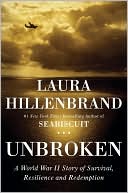
LOVE this article!
The Containerization of Infants
The article talks about the huge changes that have happened in just two generations…
recent research study replicated a study done in the 1940’s, in which psychological researchers asked kids age 3, 5, and 7 to do a number of exercises. Today’s 5 year olds were acting at a level of 3 year olds, 60 years ago, and today’s 7 year olds were barely approaching the level of the 5 year old (1, 4, 5). In the 1940’s, children were reported to walk at 8-12 months of age, now children are reported to begin walking at 12-15 months of age (2). Realistically speaking that is only a generation ago; that’s a huge decline in functional performance in a relatively short time span.
I’ve read about this in other places as well. Gentle Birth, Gentle Mothering is the first book that comes to mind. Both Dr. Sarah Buckley (author of GBGM) and Brandi Breitback (author of the above article) focus on the importance of vestibular stimuli. In other words, a big part of how our babies learn is by experiencing the world around them through natural movement. Being in an infant bucket for many hours each day means that your baby is only checking out the ceiling (or sun hood), and her inner ear is not getting to register the movement that is NEEDED for their brain to develop. It is so important!
As Dr. Sarah Buckley says,
Movement stimulates the vestibular (balance) center and the cerebellum, at the base of the brain, helping to establish brain-wiring connections that have major consequences for later brain development. For example, an area called the cerebellar vermis, which is stimulated by movement, is now thought to be a crucial region for mental health in adulthood.
As the article says,
As we look back at how infants were cared for one to two generations ago, we can imagine that infants had much more exposure to movement and seeing the world from changing angles and depths. It is more likely that a mother of generations ago would put her baby in one arm or on her hip and go about her day; the baby at that point experiences several positional changes from the mother’s body moving, as well as from the mother likely changing holds on the baby. In this manner, the baby is then experiencing changing vestibular and proprioceptive inputs that are natural to a mother’s movement and gravitational force. Baby-carrying provides the elements of pressure, motion, pleasure, warmth, security, sound that is essential to the development of the vestibular nervous system
We were at the Apple store the other day, and the employees were shocked at my husband and I. It wasn’t because we had 4 kids — as a matter of fact, 3 of them were not with us. We only had our 4-month-old, and we were carrying her in-arms. I had a clean diaper in my purse, but no giant diaper bag or baby paraphernalia. The employees couldn’t believe it. This one guy, who was in his early 20s, was all, “That’s so cool. You’re just rockin’ it with your baby and no stroller or baby bags or anything.” They all thought it was so novel. 😛
In the grand scheme of things, the employees were really quite close in age to me. I’m fairly sure that none were younger than 20, so we didn’t have 10 years between us. They grew up around infant buckets, though, and I didn’t because they weren’t popular when I was little. It was funny to me and my husband as we watched them process that we were just carrying a baby.
I understand the appeal of being able to strap your baby into the carseat, unhook them at the mall and place them in the stroller, shop, and then wheel them back to the car where they plug right back in. Sometimes life works out where you just need your hands/body free or you can’t carry your baby for some other reason, but why not carry our babies when we can? How many times have you seen a baby crying and the mother frantically pushing the stroller back and forth? (Actually, I think I WAS that mother at least once when my oldest was a baby…) Our babies’ brains are AMAZING, and they are hard wired to want to be picked up. As Dr. Sarah J. Buckley says in her book, part of why babies developed the desire to be held was so they could ensure that they were safe and not attacked by a predator… throughout time, babies have needed someone to hold them!
And, honestly, how else are you going to get to smell all of that yummy baby smell? MMmmmm! Mommas are made to want to carry babies too 😉 Our society has redefined the norm, but that doesn’t change how we are made.







